Progress often requires significant sacrifice–and sometimes the offering is the idol itself. Peace Meal Supper Club™ #9: Chavez is an unexpected exercise in iconoclasm, wherein sentimentality must yield to reality. A strong respect for tradition benefits us so long as it is not errant nostalgia.
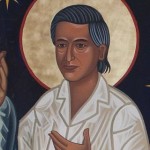
“Hero,” “suffering savior,” and “celebrity” are uneasy concepts, requiring liberal parsing of reality. Much like a golden idol standing upon clay feet,[i] their vulnerability is built in at the ground level. One only needs to cast a properly-aimed stone. Our personal choice dictates whether we cast the stone or continue to honor the idol. Which choice will foster progress?
Since idols don’t come out of nowhere, we need a preamble, a view into the world of farmworkers in the early to mid 1900s.
American farm labor in the 20th century was a roiling cauldron of complexity. The challenges inherent in vegetable farming–such as the seasonal need for work force versus year-round need for workers–were already difficult for growers to manage. How can one afford to keep a workforce in place when they are only needed for a few months at a time?[ii] Further complications came with the great economic depression and drought of the 1930s, which stimulated mass displacement of the population. The military’s need for soldiers to fight in two world wars only exacerbated the problems.
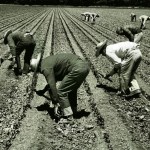
To supply a steady and affordable workforce for the nation’s farmers, the US entered into an agreement with Mexico, wherein Mexico would supply seasonal workers to US farmers.[iii] The US government would guarantee basic needs were met, such as pay and suitable housing. This guest worker program–known as Bracero, ‘one who works with his arms’–has a very rich and controversial history, extending far beyond its 1942 to 1964 lifespan. Emotions ran high through the program’s official years, and we have yet to resolve our relationship with Mexico and its people. First we’ll have to come to terms with our own duplicity in the relationship.[iv]
Concurrent with the guest worker program was the general neglect of farm workers’ rights. They were excluded from the Fair Labor Standards Act of 1938; this exclusion continued until 1966.[v] The migrant nature of the work, which required workers to move from region to region throughout the year, made it impossible for them to develop permanent ties with society. They largely lived in temporary housing provided by their host farms. The housing was substandard, often without proper water or sanitation facilities. Their migrancy also reduced their ability to use their voice through voting. They were rootless and unrepresented, and therefore invisible. It was the perfect recipe for exploitation, even for a legal citizen.
The plight of migrant farm workers was the subject of a provocative 1960 documentary by American journalist Edward R. Murrow. His introduction contained the shocking admission from a farmer: “We used to own our slaves; now we just rent them.”[vi]
Workers attempted to organize before Cesar Chavez’ campaigns of the 1960s. Growers had fought off every attempt, but by 1959 the move to unionize was gaining mass and momentum. Religious ministries, social workers, the AFL-CIO, and other groups had raised enough noise that it seemed destined to be.[vii] Into this fomenting brew strode Cesar Chavez, son of farmworkers and a veteran of the fields himself.

He was also a veteran organizer, through his work in the 1950s with the Community Service Organization (CSO), a grass-roots group aimed at helping Mexican-Americans claim their civil rights.[viii] Chavez earned praise from his teacher, civil rights activist and CSO co-founder Fred Ross. Ross established the house-meeting technique that is a hallmark of many movements since. Chavez tirelessly held house-meetings, in different towns each night. He developed a reputation as an inexhaustible activist who would survive for years on four hours of sleep per night.
Chavez’ years with the CSO ended in frustration, and he set out on his own to form a union among the most powerless workers in the nation, those excluded from protection under virtually every relevant health and labor law.[ix] It was a long-shot, going up against the most powerful industry in California, attempting to organize workers who were reluctant to upset their already fragile existence. To complicate matters, the Teamsters had begun courting growers, offering deals well in the growers’ favor.
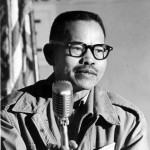
Chavez’ ability to pull people together for a cause is legendary. He invoked the Virgin of Guadalupe, Gandhi, JFK, King–also Hitler and Mao–in his efforts, and amassed enough support that he was able to co-opt a grape boycott that had been initiated by Filipino American agricultural workers.[x] The strike and subsequent boycott–directed with more brilliance from Chavez–lasted five years. Through managing the strike and engaging the public, Chavez acquired a national presence. No longer just a civil agitator and troublesome farmworker in California, he had become a rising star on the civil rights stage. He excited the public with his historic 300-mile march from the fields around Delano, CA, to the state capital in Sacramento. A subsequent 25-day fast cast him in the same light as Gandhi, attracting the attention of not only the populace, but its leaders: Robert Kennedy traveled to Delano to be with Chavez when he broke his fast.[xi]
The efforts paid off in diverse ways. Chavez became a larger-than-life figure, a suffering savior whose life was being sacrificed for the benefit of farmworkers everywhere. For the farmworkers themselves, they won the right to organize, growers agreed to better conditions and higher wages. Chavez’ fledgling union, the United Farm Workers, had won the right to represent the workers. It was a major leap forward. Robert Kennedy also benefited: Chavez motivated voters in Los Angeles, helping Kennedy win California in the 1968 Democratic presidential primaries. Chavez was invited onstage by Kennedy to celebrate victory at the Ambassador Hotel on June 5, 1968. Chavez, however, had already gone to bed.[xii]
From here the UFW’s story should be one of continual progress, of sequential victories and further betterment for those who feed us. The great leap forward, however, ended in a cul-de-sac of counter-culture cult building. As his persona grew, Chavez retreated from organizing, failed to meet the needs of his union’s members, and refused to administer contracts he had won with growers. It is a tragedy of errors and hubris.[xiii]
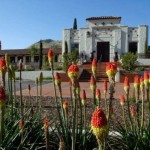
Over the following years, though his union conducted more major strikes and claimed more victories, Chavez lost himself in his own aura. He began building a dream community in the Tehachapi Mountains, miles from the clamor of the fields. He sought managerial advice from cult leader Chuck Dederich,[xiv] adapting his confrontational group therapy technique–the “Game”–for UFW board meetings. Meanwhile, growers could check off the box “Honor union contracts” with the confidence that no contracts would be forthcoming. Workers continued to pay their mandatory dues and got little in return. Moses had led them out into the wilderness and gone up to the mountain. Yet he never came down to finish what he started.

In her book The Crusades of Cesar Chavez, journalist Miriam Pawel chronicles the rise and fall of the iconic leader. Working through volumes of correspondence and meeting notes, 1500 hours of tape recordings, and personal interviews with Chavez’ closest confidantes, she paints a picture of a man quickly divorced from his cause just as he began to win: In 1975 California passed the Agricultural Labor Relations Act, the most progressive labor law in the country at that time.[xv] Chavez worked hand-in-hand with Governor Jerry Brown to craft the historic legislation. Chavez lamented its passing: “The whole fight’s going to change. Because once you’re recognized, that’s essentially what the law does, then the essential fight of recognition, which is the one that appeals to the human mind and the heart, more than anything else, is no longer there. Then from that point on, you’re talking about wages, you’re talking about money, you’re talking about benefits, you’re talking about…something more diffuse and not as crucial and critical.”[xvi]
He continued to dream, but about intentional communities and a national Poor People’s Union.[xvii] He spoke about building unions in Europe, the Philippines, and Latin America. But his own union, the identity of which he had deliberately and carefully crafted to be synonymous with his own name, decayed from his vigorous neglect.
But his abdication was not the only cause for concern. He purposefully and forcefully opposed the formation of agricultural unions in Arizona and Texas, although he had once attempted to organize there.[xviii] These upstart unions were not of the UFW fold, and in Chavez’ world, he would be the pope or there would be no pope.[xix]
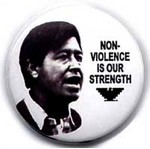
From the beginning, he adopted the principle of non-violence, in keeping with his adoration of Gandhi and King. He worked hard to present the UFW as being a peaceful organization. Along the US-Mexico border, however, his cousin Manuel Chavez engaged in terrorist activities along the “Wet Line.”[xx] Mexican nationals attempting to enter the US were routinely beaten, robbed, and left naked to make their way back into Mexico. These efforts were funded by the donations that poured into the UFW.
His uneasy relationship with illegal immigration extended beyond the bloody involvement of his cousin. He also became an INS informer, passing information to the powerful agency to aid in locating undocumented workers.[xlix] Chavez understood that undocumented workers were a powerful strike-breaking tool for California growers. In the earliest days of the UFW, the Bracero program was still active; he did not consider them “true workers.”[xxi] Later he relented, realizing that they could help his cause, papers or no papers. At best, his relationship with them was opportunistic. At worst, it was deadly.
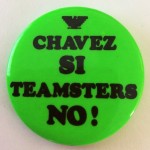
As he continued to build his ideal community in the mountains, where residents were required to wear UFW buttons each day, he became more paranoid of outsiders.[xxii] He had always created enemies out of thin air: first the growers, then the Teamsters, all immigrants, communists, other upstart unions, and his favorite villains, “those assholes,”[xxiii] and “whores in the camp.”[xxiv] He played his board members against one another to identify the most loyal. He ousted Filipinos, Mexican nationals, most Latinos. He recast Governor Brown as an enemy.[xxv] He even turned his poisoned darts upon his innermost circle. Marshall Ganz and Jerry Cohen had been with him from the beginning, and Chavez prided himself on having the support of the Jewish community. By 1981, however, they were also exiled. Chavez felt the Jews were trying to take over the union.[xxvi]
So while he can be credited for much early good, his final decades–say from 1975 to 1993–were occupied with the destruction of his own achievements. This would be forgivable if not for the fact that others paid the cost.
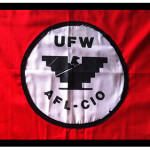
Icons are to some degree self-generating, something of which Chavez was very aware. He began retelling his own story as soon as he had a wider audience.[xxvii] His use of the Virgin of Guadalupe[xxviii] and other religious motifs were deliberate choices.[xxix] He crafted the UFW flag–a red field, a central white circle containing a black Aztec eagle–holding in mind the impact of the Nazi flag.[xxx] He knew that assuming the mantle of the “suffering savior” would win the support of the Mexican-American farmworkers. He walked in constant and visible pain during the march on Sacramento; his feet were re-bandaged nightly by his followers.[xxxi] Fasting for the greater good had long been sanctioned as a holy act. He even claimed the ability to heal through his hands.[xxxii] But holy acts and faith healing do not make a man holy, regardless of how persuasive the image.
The crowning of a hero usually indicates a battle won. A monument is erected as an acknowledgment of human progress. Unfortunately, the progress we perceive is not always actual. We must be willing to tear down the monument in order to see what is hiding underneath it.
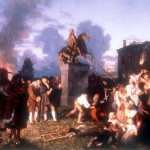
Our breaking of this icon is of critical importance, for it gravely impairs our view of the shocking reality. The farmworkers movement he purported to lead never found a universal resolution. The conditions exposed in Mr. Murrow’s 1960 documentary still exist across the country in 2015.[xxxiii] Agricultural workers are still among the most disenfranchised and abused laborers in the US. And that 1960s statement about renting slaves? Well, many growers are back to owning them. The battle has not been won. It was abandoned by its general, its workers betrayed.
It is childishly naive to accept stories without verification, whether it be the founding myths of the USA, the transparency of the Obama Administration,[xxxiv] or the accomplishments of a populist champion of the downtrodden such as Cesar Chavez. When I chose Chavez as the central theme for Peace Meal Supper Club™ #9, I was an accepting and ill-informed believer. I leave in cynical amazement. And with a stone in my hand which I long ago overcame the fear of using.
Long before Peace Meal Supper Club™ was conceived, I paid a visit to the International Civil Rights Center & Museum in Greensboro, NC. In a blog on my former website I called the museum to task for presenting international civil rights as ‘done.’
“It is a commonly known fact that women struggle for basic rights in Arab nations. Lesser known is that migrant farm workers in the US—citizens and ‘illegals’ alike, adults and children alike–are excluded from very basic labor and protection laws. Somehow, the trafficking of women has not yet been outlawed the world over. Somehow, ‘honor killing’ is still legal, pardoned, or ignored in various countries, East, West, Moslem, Hindu, and Christian. Shall we mention Guantanamo? Or perhaps LGBT struggles in Indonesia? Is the museum brave enough to discuss the plight of Leonard Peltier? Would they like to remind us that our dependence upon cheap foreign labor is a global expansion of our historic race issues?”[xxxvi]

The UFW still exists, but it primarily seems to serve as its own museum, marking its great accomplishments of the past. Its website provides tacit mention of present victories, but they are small in comparison to the union’s acclaim. In keeping with Chavez’ exclusion of other unions, they make no mention of similar, more active groups such as Farmworker Justice and the Coalition of Immokalee Workers (CIW).
As Miriam Pawel reported in a series of stories in the LA Times, the union’s chief aim is to enshrine in perpetuity its founder.[xxxvii] Donations roll in, but “the money does little to improve the lives of California farmworkers, who still struggle with the most basic health and housing needs and try to get by on seasonal, minimum-wage jobs. Most of the funds go to burnish the Chavez image and expand the family business, a multimillion-dollar enterprise with an annual payroll of $12 million that includes a dozen Chavez relatives.”
We could be gracious and say that the man is not responsible for what his heirs do. But Chavez himself had extensive holdings, albeit in the name of the UFW. In 1988, there were eighteen nonprofit and commercial entities associated with his movement.[xxxviii] Literally millions were rolling in–some of it in the form of federal grants, which the union misspent.[xxxix] Interestingly, with union membership declining steadily, there were fewer workers to collect pension checks.[xl] Just as his heirs have done, he used non-union labor to develop his real estate holdings.[xli] Just as they have done, he diverted donations into funds that answered only to him.[xlii] The present UFW leadership is faithfully carrying on the family brand.
Meanwhile, the California Agricultural Labor Relations Act has become a rarely-visited relic. On the national level, the National Labor Relations Act still excludes agricultural workers, just like it did when it was signed by President Roosevelt in 1935.[xliii]
Growers still employ non-citizens in order to evade labor laws. Human trafficking is the norm in some regions of the southern US. The harvest of shame continues–and was revisited by CBS News correspondent Byron Pitts in 2010.[xliv] He found conditions among workers much the same as Murrow did.
But he also found hope: for in the tomato fields of Immokalee, change is happening. An additional penny-per-pound has been negotiated by a worker-led union, and this penny will add up to as much as $7000 in additional annual pay. The extra penny is collected at the retail level, passed through the store–such as Whole Foods or Taco Bell–to the grower, who pays it to the workers.[xlv] The program is flourishing and conditions are improving. Other unions are making headway, and thankfully they have foregone the Oz-like lionization of their founders.

“No hay mal que por bien no venga” was a favorite saying of Chavez’.[xlvi] “There is no bad from which some good does not come.” In the larger story here, this maxim proves true. For the present-day unions have learned from the UFW’s mistakes. They’ve also learned from the tactics: the CIW has mastered the art of the house-meeting. I have been fortunate to attend a few and meet the activist-workers. They have also learned the power of economic pressure to bring about progress. The CIW’s boycott campaigns against Taco Bell, Publix Supermarkets, and Wendy’s invigorate and embody the principle.[xlvii]
Negotiations between workers, growers, and retailers, however, do not add up to increased civil rights. Those have to be negotiated politically and signed into law at a federal level. There is still much to do. As agribusiness deepens its ties with the US government, our grass-roots efforts are even more critical.
One more thing must be acknowledged before we cast our stone at the idol’s clay feet. Cesar Chavez, with great conscience and foresight, assigned all UFW correspondence, meeting notes, speeches, and tape recordings to the Water P. Reuther Labor Library at Wayne State University in Detroit.[xlviii] In spite of all his careful image-building and contrariness, he provided us a means of pulling back the curtain to see the man operating the machine. Such warts-and-all honesty is to be admired. So let him who is without sin cast the first stone.
———–
The menu for Peace Meal Supper Club™ #9: Chavez was developed under a charming cloud of naivete. Its brilliance, if you don’t mind my saying, lies in the fact that its composition has only grown stronger with knowledge. The original descriptions can be found on the announcement page; only slight modifications appear in the text below.
Course 1
El Festín de las Hormigas ~ Rosewater Vinaigrette ~ Lavash
A vibrant salad with mixed lettuces, grapes, berries, and sprouted wheat berries, portraying multiple farmworker campaigns which brought fairness closer to the fields. Lavash represents the flatbreads with which Chavez broke fasts.
Course 2
Chorizo Taquitos with Piñon Crema
Tacos are a classic workers food, and were a frequent celebration food for the United Farm Workers and their companion organizations. This adaptation matches Chavez’ own shift into veganism.
Course 3
Seitan Adobo ~ Pinakbet ~ Pancit Noodles
In recognition of the Filipino workers who began the grape strike on September 8, 1965. Their work provided a foundation for Chavez’ fledgling UFW. The strike’s success is a testament to multi-cultural coalition building.
Course 4
Capirotada a la Mode
This traditional bread pudding from the borderlands is popular in Mexico during the Easter season. It represents a culture from whom we continue to draw so much of our own sustenance. Easter brings a message of renewal, which should resonate through all our efforts towards fairness.
A little more about the menu:
Hormigas are ants–represented on this salad by sprouted wheat berries, invoked to symbolize the highly sophisticated, near-mystical social network that enables progress.
Adobo is a preserving preparation common among Native American, Latino, and Filipino cultures. Pinakbet is a Filipino vegetable braise akin to ratatouille. Pancit noodles are customarily served to honor one’s birthday. Chavez was born March 31.
Further Reading:
The Crusades of Cesar Chavez, Miriam Pawel. Bloomsbury Press, 2014
The Fruits of Their Labor: Atlantic Coast Farmworkers and the Making of Migrant Poverty, 1870-1945, Cindy Hahammovitch. University of North Carolina Press, 1997
Nobodies: Modern American Slave Labor and the Dark Side of the New Global Economy, John Bowe. Random House, 2008
Tomatoland: How Modern Industrial Agriculture Destroyed Our Most Alluring Fruit, Barry Estabrook. Andrews McNeel, 2012
These articles provide compact histories of the United Farm Workers and Cesar Chavez:
Miriam Pawel, “Farmworkers Reap Little as Union Strays From Its Roots,” LA Times, January 8, 2006, accessed March 23, 2015, http://www.latimes.com/local/la-me-ufw8jan08-story.html#page=1
Miriam Pawel, “Decisions of Long Ago Shape Union of Today,” LA Times, January 10, 2006, accessed March 23, 2015, http://www.latimes.com/local/la-me-history10jan10-story.html#page=1
Nelson Lichtenstein, “The Rise and Fall of Cesar Chavez and the United Farm Workers,” Dissent Magazine, April 8, 2012, accessed March 23, 2015, http://www.alternet.org/story/154859/the_rise_and_fall_of_cesar_chavez_and_the_united_farm_workers
Mark R. Day, “Review: Chavez Remembered, Warts and All,” Labor Notes, April 14, 2014, accessed March 23, 2015, http://www.labornotes.org/blogs/2014/04/review-cesar-chavez-remembered-warts-and-all
Other relevant websites:
Bracero History Archive, http://braceroarchive.org/about
Farmworker Justice, http://www.farmworkerjustice.org
Coalition of Immokalee Workers, http://www.ciw-online.org
Notes:
[i] Nebuchadnezzar’s Dream, Book of Daniel 2: 24-31; https://www.biblegateway.com/passage/?search=Daniel%202
[ii] The challenges of migrant labor are brilliantly related by Cindy Hahammovich in The Fruits of Their Labor: Atlantic Coast Farmworkers and the Making of Migrant Poverty, 1870-1945, University of North Carolina Press, 1997
[iii] http://braceroarchive.org/about; http://americanhistory.si.edu/exhibitions/bittersweet-harvest-bracero-program-1942-1964
[iv] http://en.wikipedia.org/wiki/Mexican_Repatriation; http://en.wikipedia.org/wiki/Operation_Wetback
[v] http://www.farmworkerjustice.org/advocacy-and-programs/us-labor-law-farmworkers
[vi] The entire documentary is available on Youtube: https://www.youtube.com/watch?v=yJTVF_dya7E
[vii] Miriam Pawel, The Crusades of Cesar Chavez (New York: Bloomsbury Press, 2014), 54-55.
[viii] Pawel, 26.
[ix] Pawel, 72-77.
[x] Marshall Ganz, “Not the Cesar Chavez I Knew,” The Nation, April 1, 2014, accessed March 23, 2015, http://www.thenation.com/article/179121/not-cesar-chavez-i-knew#
[xi] Pawel, 167.
[xii] Pawel, 171.
[xiii] Nelson Lichtenstein, “The Rise and Fall of Cesar Chavez and the United Farm Workers,” Dissent Magazine, April 8, 2012, accessed March 23, 2015, http://www.alternet.org/story/154859/the_rise_and_fall_of_cesar_chavez_and_the_united_farm_workers
[xiv] http://en.wikipedia.org/wiki/Synanon
[xv] Philip Martin, “Labor Relations in California Agriculture: 1975-2000,” Changing Face, UC Davis, September 20, 2000, accessed March 23, 2015, https://migration.ucdavis.edu/cf/more.php?id=44
[xvi] Pawel, 308
[xvii] Pawel, 308, 325, 370
[xviii] Pawel, 419
[xix] Pawel, 415
[xx] Pawel, 288
[xxi] Pawel, 81
[xxii] Pawel, 347
[xxiii] Pawel, 377
[xxiv] Pawel, 268
[xxv] Pawel, 319
[xxvi] Pawel, 428
[xxvii] Pawel, 90, 130
[xxviii] Pawel, 127
[xxix] http Marshall Ganz, “Not the Cesar Chavez I Knew,” The Nation, April 1, 2014, accessed March 23, 2015, http://www.thenation.com/article/179121/not-cesar-chavez-i-knew#
[xxx] Pawel, 89
[xxxi] Pawel, 127
[xxxii] Pawel, 387
[xxxiii] See Estabrook, Tomatoland, and Bowe, Nobodies
[xxxiv] http://www.democracynow.org/blog/2014/3/27/barack_obama_the_least_transparent_president; http://www.democracynow.org/2015/3/19/headlines#31911
[xxxv] http://redfalcon.com/blog1/?page_id=21 Note: this reference is no longer valid.
[xxxvi] http://redfalcon.com/blog1/?p=180 Note: this reference is no longer valid.
[xxxvii] Miriam Pawel, “Farmworkers Reap Little as Union Strays From Its Roots,” LA Times, January 8, 2006, accessed March 23, 2015, http://www.latimes.com/local/la-me-ufw8jan08-story.html#page=1
[xxxviii] Pawel, 452
[xxxix] Pawel, 433
[xl] Pawel, 453
[xli] Pawel, 450
[xlii] Pawel, 454
[xliii] http://en.wikipedia.org/wiki/National_Labor_Relations_Act
[xliv] https://www.youtube.com/watch?v=rkV3oVn209s ; http://www.thenation.com/article/180875/americas-new-harvest-shame#
[xlv] http://www.fairfoodprogram.org/
[xlvi] Pawel, 63
[xlvii] http://ciw-online.org/campaign-for-fair-food/
[xlviii] Pawel, 180
[xlix] Pawel, 293, 313; http://www.latintimes.com/cesar-chavez-legacy-wet-lines-illegals-campaign-dark-side-latino-icons-opposition-undocumented
